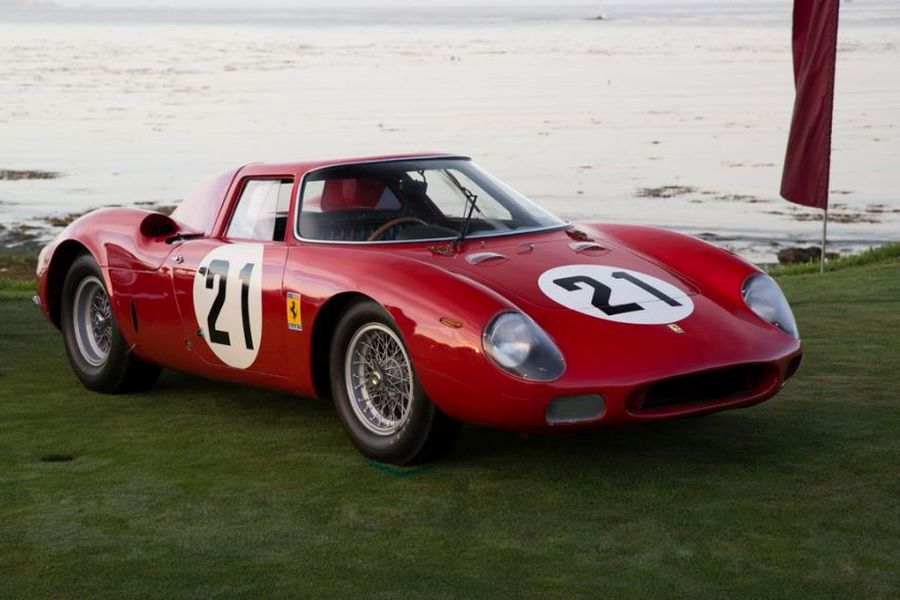Ferrari 250 LM – the Last Prancing Horse to Win at Le Mans
The Ferrari 250 LM is one of the cars that have the special place in a history of one of the greatest Italian sports car manufacturer. Ferrari collected nine victories at 24 hours of Le Mans from 1949 to 1965 and the 250 LM was the last winning car. The historic victory was achieved by Masten Gregory and Jochen Rindt, who were driving the #21 car for the North American Racing Team, but also by the reserve driver Ed Hugus, who has never been officially recognized as one of the winners.
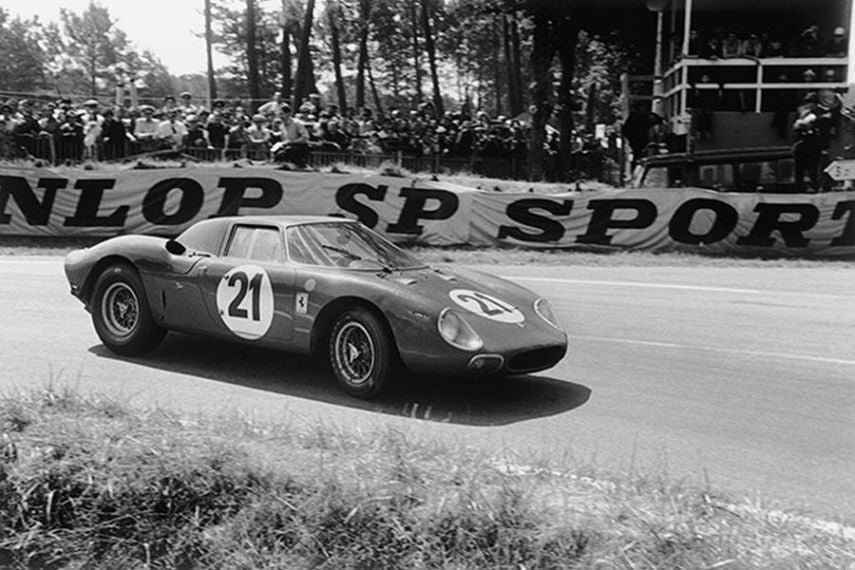
1965 Le Mans winner
Nine wins for Ferrari at Le Mans
The first Le Mans win for Ferrari came with Lord Selsdon’s Ferrari 166MM in 1949. Five years later, Scuderia Ferrari scored its first victory with Jose Froilan Gonzalez and Maurice Trintignant in the Ferrari 375 Plus. In 1958, the Ferrari 250 Testa Rossa became the victorious car for the first time and then two more times in 1960 and 1961. The 1962 Le Mans victory went to Ferrari 330 TRI/LM. In 1963, victory was achieved by Ferrari 250 P (1963), followed by 275 P and 250 LM.
The 250 LM was a GT car homologated as a prototype
The Ferrari 250 LM (Le Mans) was introduced in November 1963 at Paris Motor Show as the closed-roof variant of the successful open-top 250 P. Ferrari wanted to homologate the 250 LM as a Group 3 Grand Touring Car, but in April 1964 the FIA refused to do so because Ferrari didn’t reach the required number of 100 produced units. Because of that, the 250 LM was running in the Prototype class for the first two seasons, until it was homologated as the Group 4 car for the 1966 season.
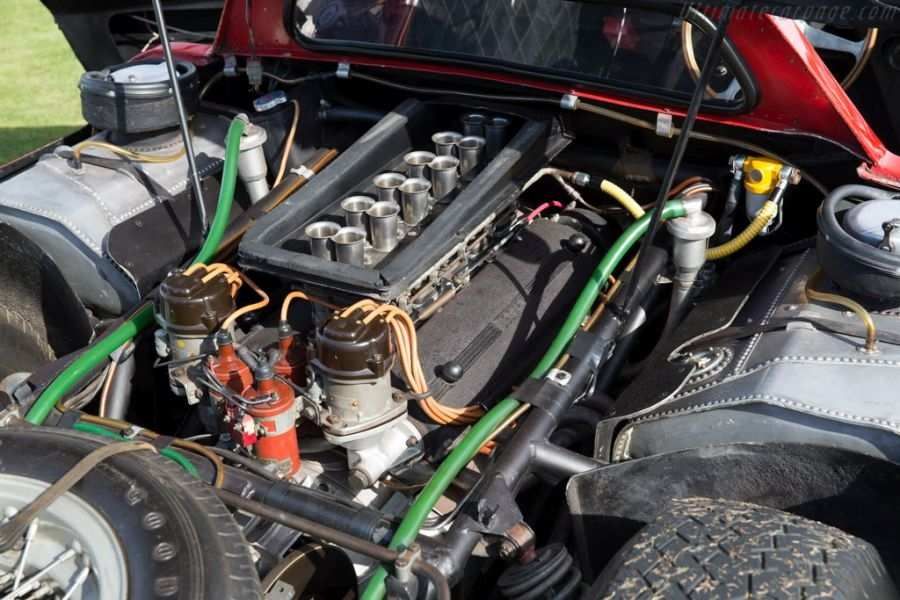
The 3.3-litre engine of Ferrari 250 LM
Only thirty-two units were built
Only 32 cars were built, mostly for privateers and teams which raced in all sorts of racing, from hill climbs to endurance races at closed circuits. The middle-engined car was powered by the 3.3-litre V12 engine, though the name did not change with the increase in displacement. As we know, the number “250” in the name of Ferrari cars with original 3.0-litre V12 engines denotes the displacement in cubic centimeters of each of its cylinders. The car should have been called 275 LM, but for commercial and homologation reasons the 250 was used.
The 3.3-litre engine with six Weber 38 DCN carburetors produced about 320 hp. The power traveled to the rear wheels through the five-speed manual transmission. The car featured a fully independent double wishbone suspension and disc brakes on all four wheels.
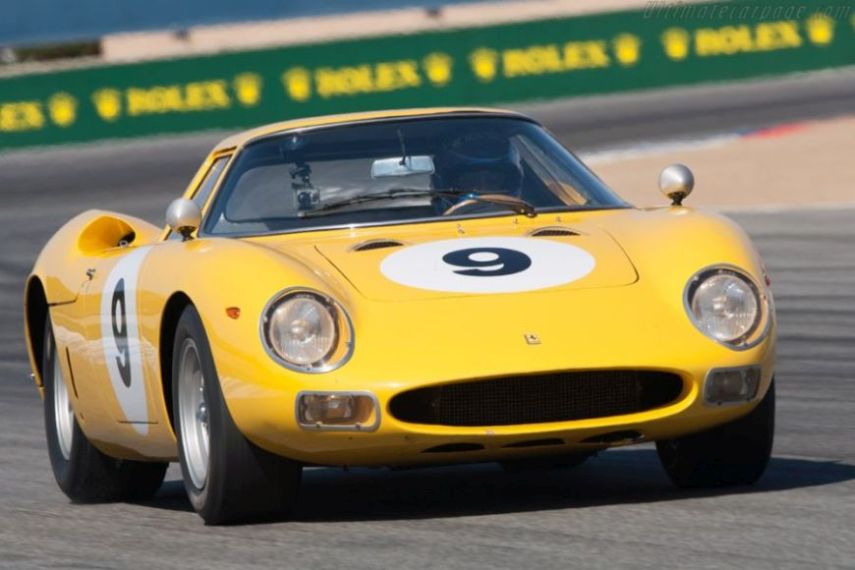
Thirty-two 250 LMs were built
Fighting against rivals from the same stable
Since the 250 LM was only eligible to race in the prototype class, its rivals were more sophisticated cars from Ferrari’s stable (275P or 330 P). This didn’t stop the 250 LM from winning, so ten wins were scored during the 1964 season. Some notable wins were Reims 12 hours (Graham Hill, Jo Bonnier), Zolder GP (Lucien Bianchi) or Kyalami 9 hours (David Piper, Tony Maggs).
Two 250 LMs at 1964 Le Mans
For the 1964 Le Mans race, two 250 LM cars entered the event, but only one started. David Piper and Jochen Rindt didn’t start with North American Racing Team’s car because of mechanical failure. The #23 car of the Ecurie National Belge, driven by Pierre Dumay and Gerald Langlois van Ophem, finished in 16th place. The race-winning car was the #20 Ferrari 275 P of Nino Vaccarella and Jean Guichet.
The season of 1965 started with the third place overall and class win for David Piper and Tony Maggs at Sebring 12 hours. In May, Willy Mairesse was the winner at Grand Prix de Spa with 250 LM. And then, in June, the greatest of all races followed.
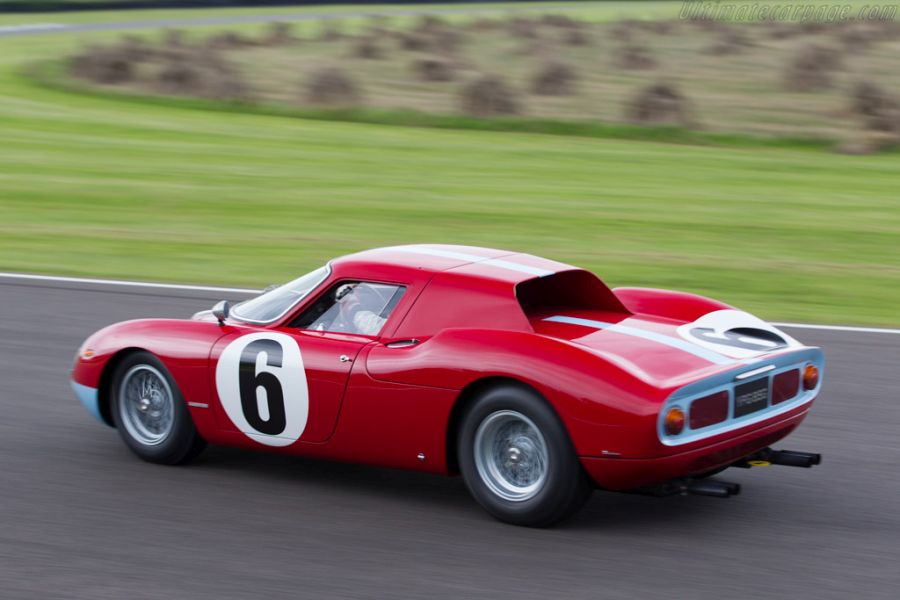
The 250 LM was GT car classified as a prototype
The controversy behind the 1965 Le Mans victory
Five 250 LMs were entered in the 1965 24 Hours of Le Mans by privateers – #21 North American Racing Team, #23 Maranello Concessionaires, #25 Ecurie Francorchamps, #26 Pierre Dumay and #27 Scuderia Filipinetti. Scuderia Ferrari entered the race with three 275 P2 and 330 P2 Spyder prototypes but all three retired before the end. The same happened to Ford GT40 entries, so the North American Racing Team took the opportunity and won the race.
The winners were Masten Gregory and Jochen Rindt, but their win is marked by one of the biggest controversies in the history of Le Mans. The third crew member was an American driver Ed Hugus. For him, it was the tenth participation at Le Mans. He was supposed to drive another NART’s car, that wasn’t ready, which is why he was a reserve driver.
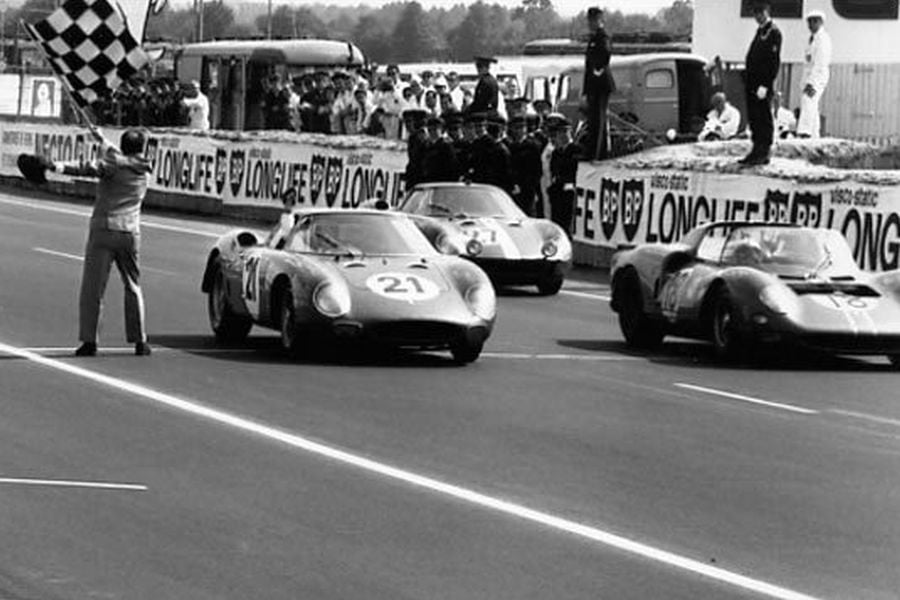
Who was driving the #21 car?
Ed Hugus was never officially recognized as Le Mans winner
When Masten Gregory finished his daily stint, Jochen Rindt was missing. He was slipping somewhere but nobody could find him, so Hugus jumped into #21 car. He was driving until the morning and then Gregory again took the car. It was against the rules and the team would be disqualified if someone found out what happened. Because of that, the participation of Ed Hugus remained secretive for many years. Hugus died in June 2006, and he was never awarded as Le Mans winner, although he revealed his story.
Even if the #21 car was disqualified, the 250 LM would be the last Ferrari’s winner of Le Mans because Pierre Dumay and Gustave Gosselin finished in second place with #26 Ferrari 250 LM.
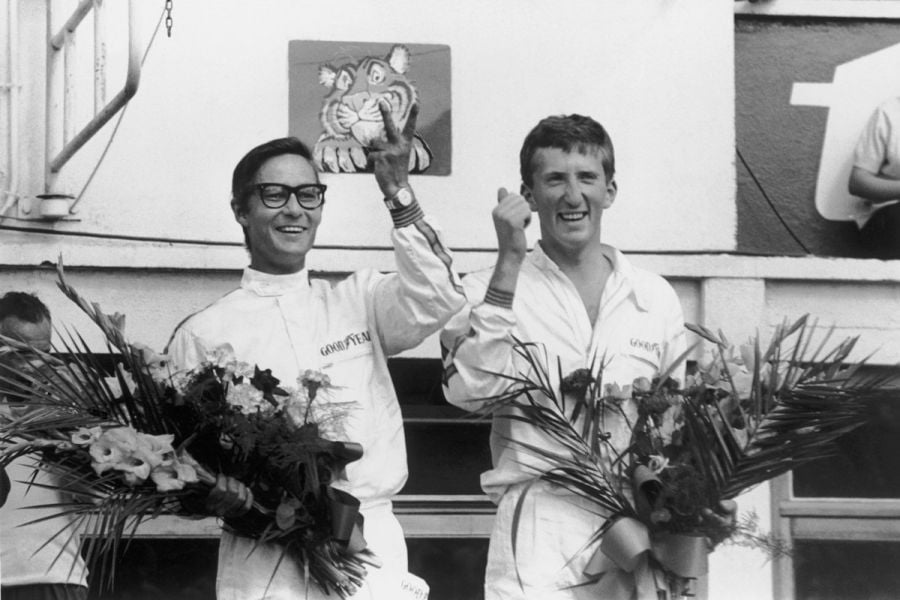
Masten Gregory and Jochen Rindt are celebrating 1965 Le Mans victory
The 250 LM was racing until 1970
In the next couple of years, Ferrari 250 LM scored several wins with famous and less known drivers at the wheel. Masten Gregory returned to Le Mans with that car in 1968, failing to finish the race. The #21 car, driven by David Piper and Richard Attwood, finished seventh overall in that race.
The 250 LM had the last Le Mans appearance in 1969 when Teodoro Zeccoli and Sam Posey finished 8th overall with NART’s car. The last race for the 250 LM was 1970 Daytona 24h, when Gregg Young and Luigi Chinetti Jr finished seventh overall.
One of the greatest Ferraris of all time
Although the 250 LM was not as successful as its predecessors, its’s widely lauded as one of the greatest Ferraris of all time by owners, historians and racing fans. The car with chassis number 6105 was sold in 2015 for $17,600,000 and was one of the most expensive cars ever sold at auctions. The Le Mans-winning #21 car, the one with chassis number 5893, is still a popular attraction at classic car shows.
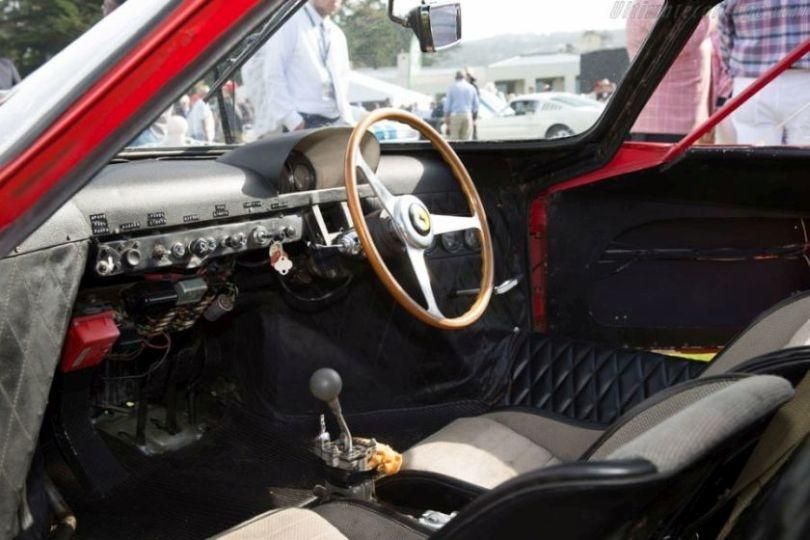
The interior of Ferrari 250 LM
Ferrari 250 LM technical specifications
Length: 4270 mm
Width: 1700 mm
Height: 1150 mm
Wheelbase: 2400 mm
Track (front and rear): 1350/1340 mm
Weight: 850 kg
Chassis/body: aluminum body on the steel multi-tubular spaceframe
Engine: 3286cc, V12 naturally aspirated
Power/torque: 320 hp/294 Nm
Top speed: 295 km/h
Transmission: rear wheel drive5-speed manual gearbox
Front/rear suspension: double wishbones, coil springs, shock absorbers, anti-roll bar
Braking: Dunlop discs all-round
Wheels/tyres: front 5.5X15, 7×15 rear/front 6×15, rear 7.5×15
Video : 1964 Ferrari 250 LM
Photos: ultimatecarpage.com, motorsportmagazine.com,


